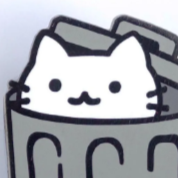|
Giga Gaia posted:Don't Pee on the Electric Flame Don't Eat the Yellow Firethundersnow
|
|
|
|

|
| # ? May 30, 2024 22:14 |
|
Mayor Dave posted:Oh yeah poor planning and lovely housing policies have definitely been a leading factor in fire issues but climate change is turbocharging them as well Maybe? We are currently maybe 20% over the historic fire reigme (1.8 m ha) and its entirely possibly thats because previous years dont burn up enough fuel, so the fuels build up and "roll over" into the next year, catch, and now you have a much larger fire. For example in 2019, only 259,000 acres burned in California. Thats substantially smaller than what we think is supposed to burn and thats likely a part of what we are seeing now. Telsa Cola has issued a correction as of 18:48 on Sep 9, 2020 |
|
|
|
Climate change makes fires more likely to happen, increased fuel load from decades of poor forest management makes the fires worse.
|
|
|
|
Telsa Cola posted:Maybe? We are currently maybe 20% over the historic fire reigme (1.8 m ha) and its entirely possibly thats because previous years dont burn up enough fuel, so the fuels build up and "roll over" into the next year, catch, and now you have a much larger fire. My figures are actually wrong here, we are actually roughly halfway to the amount of acreage burned annually historically, so this isnt even worse then whats estimated to have been the norm. 2.3 millon acres burned in 2020 is roughly 930,000 hectares. Pre-1800 estimate is 1.8 million hectares annually in California alone.
|
|
|
|
Telsa Cola posted:My figures are actually wrong here, we are actually roughly halfway to the amount of acreage burned annually historically, so this isnt even worse then whats estimated to have been the norm. The real fire season in CA is usually just starting around now. The fires start happening over summer but the worst almost always come in September and October, just before the next round of rain starts.
|
|
|
|
Vox Nihili posted:The real fire season in CA is usually just starting around now. The fires start happening over summer but the worst almost always come in September and October, just before the next round of rain starts. Yeah and the seasons are extended on both ends now because of climate change.
|
|
|
|
the increasing severity of californias forest fires are linked to climate mainly because of bark beetle infestations weakening and killing pine trees prone to infestation due to drought dehydration, as well as higher temperatures making ignition temperatures easier to obtain and generating larger winds
|
|
|
|
Took a stroll down the fury road wearing a K95 to snap pics and take in the bedlam. Saw a bluejay pecking and pulling at a window like it was trying to get inside. Decided to go home and noticed a fine white powder coating the streets and sidewalk.
|
|
|
|
|
paradise's approach to land development was basically yolo... when my grandparents retired they moved from santa anna and bought a disused apple orchard in paradise, built a shack, and funded the construction of their house by subdividing the apple orchard into smaller lots and selling them as more people moved in... was once an apple orchard with one shack became 16 lots with houses down a one lane dirt road... that's how we ended up with 30k people all on septic tanks and not much more traffic capacity than when they closed down the railroad 100 years ago
|
|
|
|
ratbert90 posted:
nice place to visit though, eat Boise Fry
|
|
|
|
Spoondick posted:paradise's approach to land development was basically yolo... when my grandparents retired they moved from santa anna and bought a disused apple orchard in paradise, built a shack, and funded the construction of their house by subdividing the apple orchard into smaller lots and selling them as more people moved in... was once an apple orchard with one shack became 16 lots with houses down a one lane dirt road... that's how we ended up with 30k people all on septic tanks and not much more traffic capacity than when they closed down the railroad 100 years ago This is almost every city in California. See also all the trivalley area. But yeah my uncle/aunt have lived up in Paradise for like 40 years until it burnt down. place sucked and was weird
|
|
|
|
luv 2 have a fire 15 minutes away from where I live that's 3x larger than the city I live in, whatever, who cares, vote Biden, eat my rear end https://kval.com/news/local/holiday-farm-fire-east-of-springfield-has-burned-over-100k-acres-since-monday-night
|
|
|
Shifty Nipples posted:Climate change makes fires more likely to happen, increased fuel load from decades of poor forest management makes the fires worse. i love my n^n scaling of doomsday
|
|
|
|
|
Telsa Cola posted:My figures are actually wrong here, we are actually roughly halfway to the amount of acreage burned annually historically, so this isnt even worse then whats estimated to have been the norm. The real problem is that these fires are uncontrolled, rather than the amount of land they're burning. You still need to burn off the fuel either way, but with a prescribed burn you can make sure tourists aren't in the area, do the firebreaks in advance to stop it spreading where you don't want it to, avoid sending fire crews into a loving disaster, and burn earlier/later in the year so there's less fuel available at the peak of the season.
|
|
|
|
Telsa Cola posted:My figures are actually wrong here, we are actually roughly halfway to the amount of acreage burned annually historically, so this isnt even worse then whats estimated to have been the norm. California is 42 million hectares, according to Google. Not all of that is burning regularly (presumably the high mountains and the desert don’t participate in the craziness). Which means that what’s left would need to burn even more often to rack up 1.8 million hectares per year. What kind of forest can you sustain when a fire sweeps through every 15-20 years? Are the fires less intense, so they do less damage to the plant life? Presumably they’re still just as antithetical to humans, so how did native Californians deal with the issue of giant fires once or twice per generation?
|
|
|
JAY ZERO SUM GAME posted:lol at all the west coast people moving to Boise, that place and the entrire Treasure Valley is toast in the next 20 years why is it toast? forest fires or lack of water?
|
|
|
|
|
Lokar posted:forest fires and lack of water also filled with raging racist that burn down anything the immigrant population builds
|
|
|
|
the actual, downtown, bougie part of boise is loving tinderbox, there's giant south facing foothills covered in dry grass and shrubrush right up to nice little (expensive for the area) homes that nestle to downtown, full of giant lush trees one out of control fire that springs up in the night, it's all loving toast
|
|
|
|
Lokar posted:why is it toast? all the shittiest people from caliornia and going to work their magic on idaho next
|
|
|
|
Grundulum posted:What kind of forest can you sustain when a fire sweeps through every 15-20 years? Are the fires less intense, so they do less damage to the plant life? Yes, without the increased fuel load from keeping the forest from burning the fires would burn though the stuff on the ground and leave the trees mostly unharmed aside from blackening their bark.
|
|
|
|
Deformed Church posted:The real problem is that these fires are uncontrolled, rather than the amount of land they're burning. Totally 100% agree with you. We have to burn (and will burn even if we dont want it) so we might as well plan ot out and do it safely. Grundulum posted:California is 42 million hectares, according to Google. Not all of that is burning regularly (presumably the high mountains and the desert don’t participate in the craziness). Which means that what’s left would need to burn even more often to rack up 1.8 million hectares per year. What kind of forest can you sustain when a fire sweeps through every 15-20 years? Are the fires less intense, so they do less damage to the plant life? Presumably they’re still just as antithetical to humans, so how did native Californians deal with the issue of giant fires once or twice per generation? Basically when you have regular burns the fuel load doesn't build up enough each go around to create an intense fire, often you get slow, low intensity creeping burns that just clear out the ground level of grasses and branches and such. These can last for a long time (a month or so) but tend to fizzle out and not do too much damage. Some small trees die but this actually a GOOD thing. Trees should actually be fairly decently spaced out to remain healthy and unstressed and when these small trees all survive they create really dense, unhealthy clusters which catch and spread flames and diseases and such much easier. Many plants get top killed (everything above the soil dies but they grow back, they are used to it) or the seeds resist in the soil and sprout back after the flames have passed. This is what tends to happen in low to mild intensity burns. In high intensity burns the soil basically gets sterilized, roots burn, and soil sometimes ceramiczes. Obviously this bad for the plants. Natives dealt with it by doing managed burns and possibly creating a patchwork of burned and not burned areas that limit the spread of fires and kept them less intense. Though when the Santa Anas kick in all bets tend to be off.
|
|
|
|
I remember learning about controlled burns in like grade school 20 years ago and am not surprised that it is still a massive issue that no one cares about.
|
|
|
|
cross posting my photos from 10 AM today    love 2 live in a stupid sexy pinstagram filter. sexpia on da beach
|
|
|
|
Grundulum posted:California is 42 million hectares, according to Google. Not all of that is burning regularly (presumably the high mountains and the desert don’t participate in the craziness). Which means that what’s left would need to burn even more often to rack up 1.8 million hectares per year. What kind of forest can you sustain when a fire sweeps through every 15-20 years? Are the fires less intense, so they do less damage to the plant life? Presumably they’re still just as antithetical to humans, so how did native Californians deal with the issue of giant fires once or twice per generation? before managed forests large fires that spread through the canopy with intense heat were rare and most fires were low intensity brush fires tree trunks and soil biomes could survive while thinning smaller trees and saplings
|
|
|
|
Stereotype posted:I remember learning about controlled burns in like grade school 20 years ago and am not surprised that it is still a massive issue that no one cares about.
|
|
|
|
Heres basically what we are saying but in picture form. If it looks very sparse thats actually what many healthy forests should look like. I couldn't find those old photo series that showed before and after shots of managed forests but they were similar. Telsa Cola has issued a correction as of 20:14 on Sep 9, 2020 |
|
|
|
Grundulum posted:California is 42 million hectares, according to Google. Not all of that is burning regularly (presumably the high mountains and the desert don’t participate in the craziness). Which means that what’s left would need to burn even more often to rack up 1.8 million hectares per year. What kind of forest can you sustain when a fire sweeps through every 15-20 years? Are the fires less intense, so they do less damage to the plant life? Presumably they’re still just as antithetical to humans, so how did native Californians deal with the issue of giant fires once or twice per generation? A lot of this isn't giant pine forests, the foothills and Coastal Range take up a good chunk of land and it's all rolling oak savannas. This is what used to burn frequently: 
|
|
|
|
Grundulum posted:California is 42 million hectares, according to Google. Not all of that is burning regularly (presumably the high mountains and the desert don’t participate in the craziness). Which means that what’s left would need to burn even more often to rack up 1.8 million hectares per year. What kind of forest can you sustain when a fire sweeps through every 15-20 years? Are the fires less intense, so they do less damage to the plant life? Presumably they’re still just as antithetical to humans, so how did native Californians deal with the issue of giant fires once or twice per generation? Larger trees can survive less intense fires, and burns are also a part of the natural lifecycle of a lot of plants, helping with germination and limiting their competition. Apparently they also help the nutrient process and can result in richer soils. The smaller plants can generally bounce back fairly quickly, from less intense fires. It's these really bad ones we get now, where there's excess fuel and it's much hotter and dryer, that are super destructive. Native Americans were actually pretty good at land management, and the "pristine, untouched wilderness" that the Europeans found wasn't really that at all. They understood the benefits of burning, as a way of modifying the land to suit their needs (opening up plains, clearing areas for settlement, enriching the soil) and for burning smaller amounts of fuel to protect against those once per generation nightmares.
|
|
|
|
nikosoft posted:A lot of this isn't giant pine forests, the foothills and Coastal Range take up a good chunk of land and it's all rolling oak savannas. This is what used to burn frequently: another fun note is none of those grasses are native https://medium.com/asparagus-magazine/californias-lying-fields-of-gold-f8c6f0a348d5 quote:When Sir Francis Drake and Junípero Serra and Alexander Andreyevich Baranov and all the rest of the colonizing, evangelizing men arrived on the west coast, they were not greeted with golden rolling hills. They saw a scrubby land where tufts of bunchgrass erupted scattershot.
|
|
|
|
Telsa Cola posted:Heres basically what we are saying but in picture form. For anyone who can't parse this image, Forest fires happen a lot naturally, and it would burn off all the old dead poo poo and be done with it. Humans in their wisdom, looked at fires as things to be prevented, which means that we have 100+ years of old dead poo poo to burn, because we refused to let it just happen naturally, which just makes things exponentially worse.
|
|
|
|
The 100+ year thing isn't really an exaggeration. It does not decompose quickly, at all, and I have had tree falls marked on 20-30 year old maps and the trunk is still there, and will likely remain there for at least another decade. They do not naturally degrade anywhere near as fast as you would think.
|
|
|
|
Telsa Cola posted:The 100+ year thing isn't really an exaggeration. It does not decompose quickly, at all, and I have had tree falls marked on 20-30 year old maps and the trunk is still there, and will likely remain there for at least another decade.
|
|
|
|
Telsa Cola posted:Heres basically what we are saying but in picture form. *glances at the extremely thick and lush east coast forests*
|
|
|
|
here's to hoping climate change brings my region more rain instead of less because if we end up drying out it'll make what we're seeing now seem like child's play
|
|
|
|
San Francisco wildfire cam: https://www.facebook.com/LiveStormChaser/videos/759118017965784
|
|
|
|
PIZZA.BAT posted:here's to hoping climate change brings my region more rain instead of less because if we end up drying out it'll make what we're seeing now seem like child's play who knows, thjats the fun thing. it might be more rain, but in a condensed 2-4 week window where it all just runs off causing flooding and then dries out the rest of the year. i loving love rain though and im real bummed rainy seasons here in CA are just getting condensed big time to non-existant except for atmospheric rivers that then cause a lot of flooding back to drought.
|
|
|
|
JAY ZERO SUM GAME posted:takes about as long to decompose as it was alive, has been the figure i've heard, and matches up with what I've run into Huh, thats actually really interesting. Thanks for that. PIZZA.BAT posted:*glances at the extremely thick and lush east coast forests* Honestly don't know well how this all holds up in the east but you likely have similar management problems.
|
|
|
|
Telsa Cola posted:Honestly don't know well how this all holds up in the east but you likely have similar management problems. We don't do controlled burns on the east coast because everything is so wet that forest fires largely don't happen. Frankly I'm now wondering if they're even possible over here. Our forests are *extremely* thick compared to those photos- like image as close as you can get to a rainforest without actually being a rainforest 
|
|
|
|
There's not many places that have the particularly flammable and complicated environment california and I guess some of Oregon does - I mean lots of places do controlled burns for forest management but those places don't have santa ana winds or such a huge area of long term unmet responsibility with underlying labor shortages owing no small part to incredibly cruel criminal justice traditions refusing to actually take trained firefighters out of prison and make them official firefighters with actual pay and stuff. I mean maybe parts of the upper plains where the rockies' rain shadow makes things dry all the time but even then it's just a matter of handling the potential of a natural fire to impinge on populated areas, which there tend to be few unless there's widespread drought (sup Colorado). A lot of the pine forest type of environment needs fire but they don't have a need beyond clearing out the understory and toasting the pinecones so they can actually reproduce. There's not all the other fire dependent plant species making fuel all over and there's certainly not the population density or growth pushing houses into that biome in the plains. Anyway, good luck to california, oregon, and colorado in dealing with the fires, hope y'all stay safe
|
|
|
|

|
| # ? May 30, 2024 22:14 |
|
every single one of my coworkers that live in phoenix has reported that they lost their homes last night, including a dude who just had a kid on sunday. no videos yet but from what people have said, it sounds like that town is just completely gone. about a third of talent is gone but the city center was mostly spared (some fire damage to exteriors but no total losses). the only mosque in talent, and indeed the only mosque in all of southern oregon, was lost in the fire.
|
|
|

































